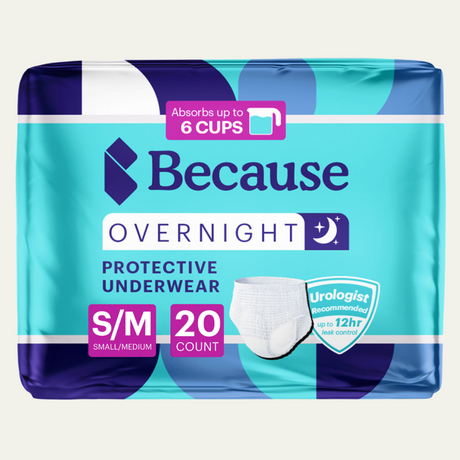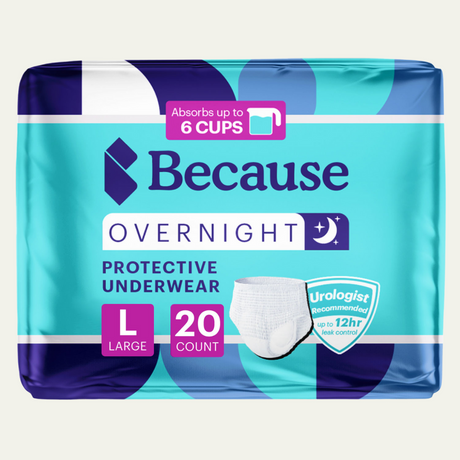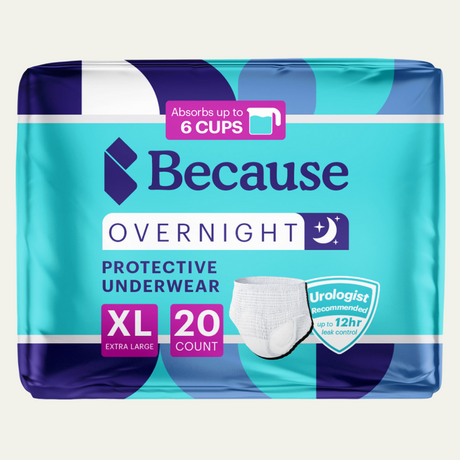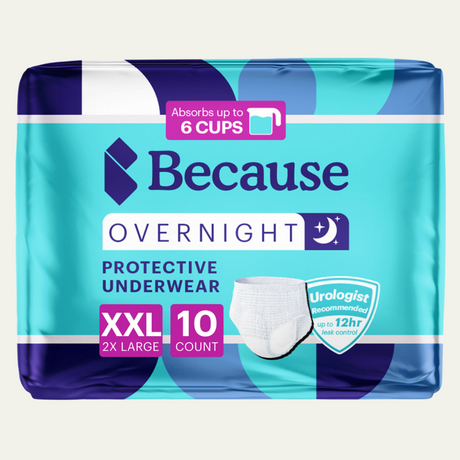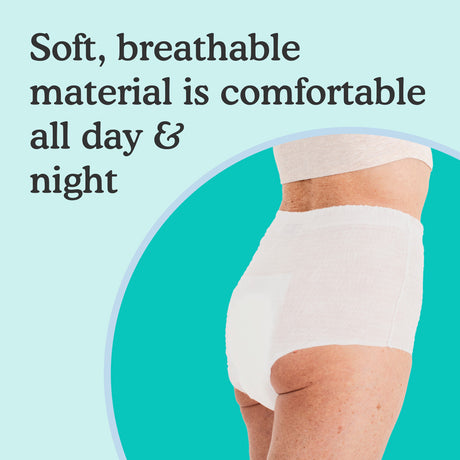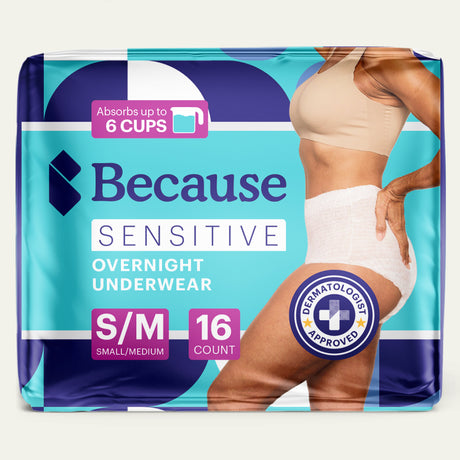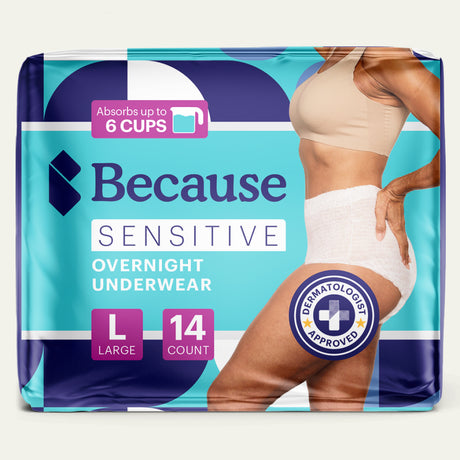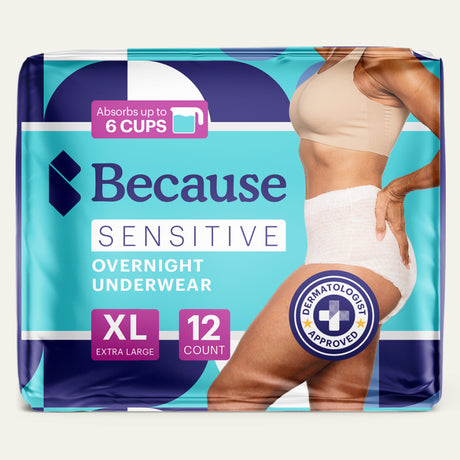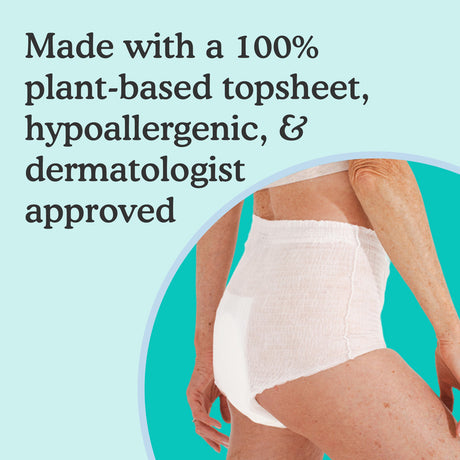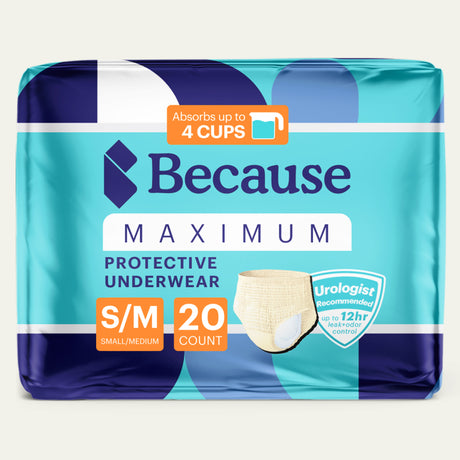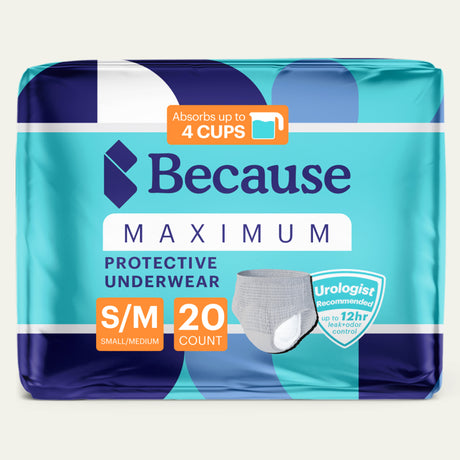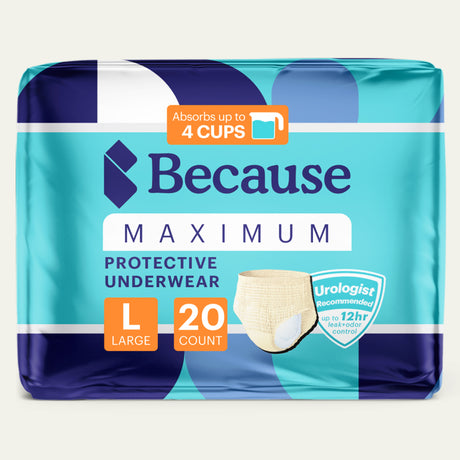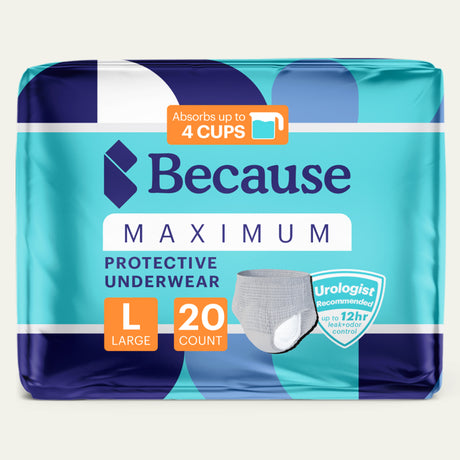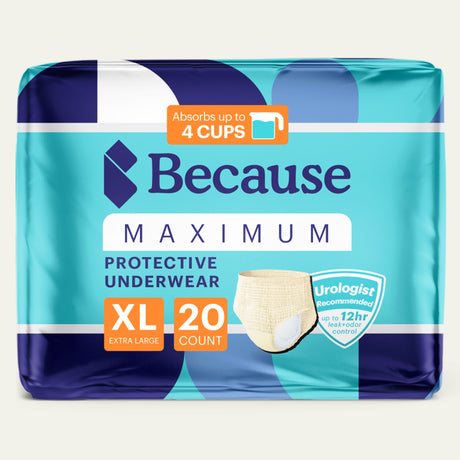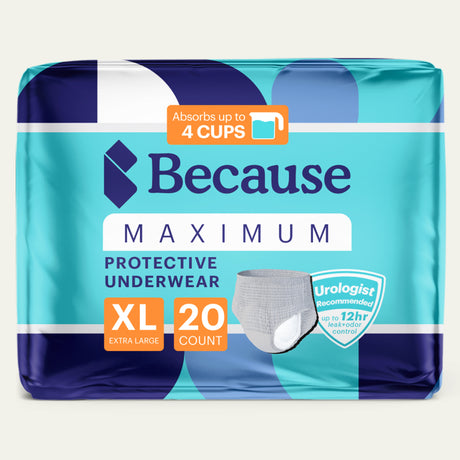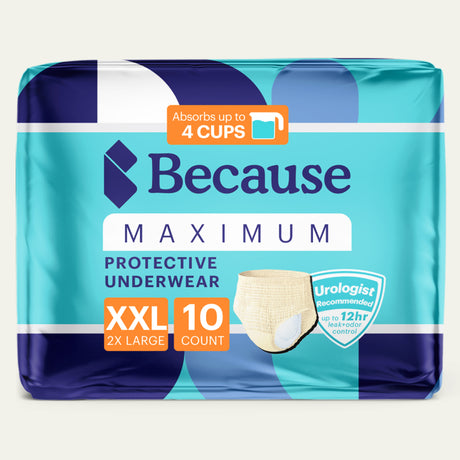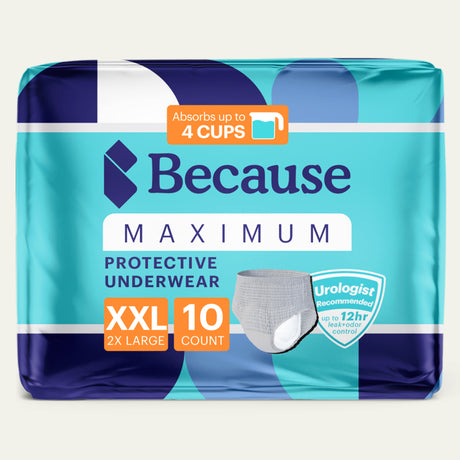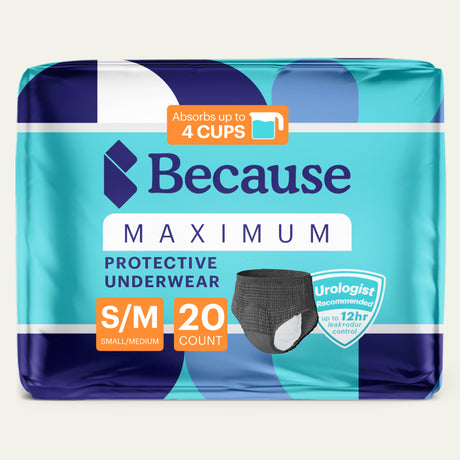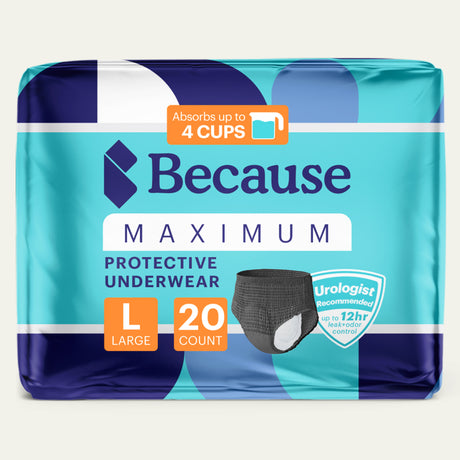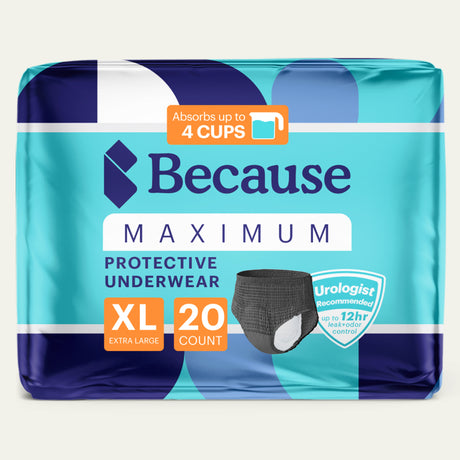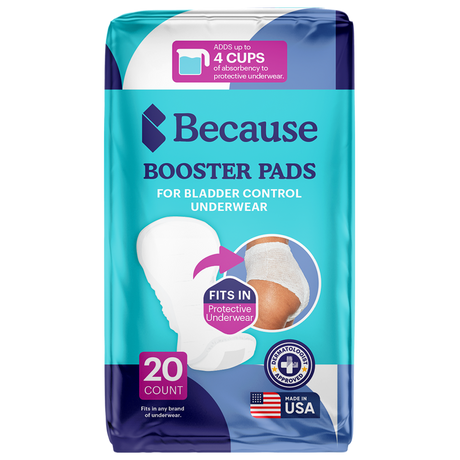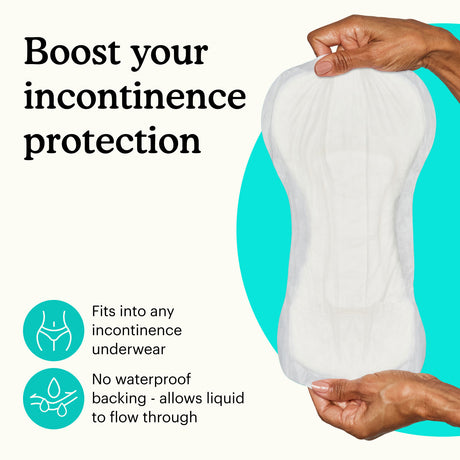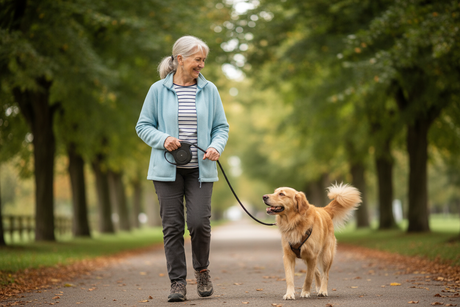Adults and children with Autism Spectrum Disorder (ASD) can struggle with incontinence. Most parents of those with ASD have struggled with the potty training process at some point in their child’s development. If you have a child with ASD, teaching your child to use the toilet regularly can present a unique set of challenges. Thankfully, with the right tactics and products, you can help set your child up for success to use the toilet and have fewer accidents. Read more below about how incontinence and autism are related and tips for how to manage incontinence with special needs.
How are Autism and Incontinence Related?
Children and adults with autism may experience incontinence due to the the following symptoms of autism:
- Sensory issues. Children and adults of all ages with autism often experience over or under-sensitivities to sounds, lights, touch, and other stimuli. When learning to use the bathroom, the loud sound of a toilet flushing or the cold feel of a toilet seat may trigger a sensory problem that disrupts the learning process.
- Learning delays. Transitions can be difficult for people with autism, particularly when it comes to learning a new skill. For children, going from a familiar routine of using a diaper to using a toilet can be a very big change. Children with autism typically take longer to learn how to make this transition.
- Communication issues. Social skills and social interactions can be challenging for those with ASD. Avoiding eye contact or verbal communication can pose a challenge to toilet training.
- Body awareness. Many people with autism may not recognize the urge to use the bathroom until it’s too late. Awareness that the bladder or bowel is full is called interoceptive awareness. People with autism tend to have an impairment in the receptors that transport the signal from the body to the brain that the bladder needs to be eliminated. This can also result in a lack of bowel control.
- Gastrointestinal (GI) issues. Children with ASD have more gastrointestinal symptoms such as abdominal pain, constipation and diarrhea, compared with their peers. Selective eating, lack of fluid intake, and anxiety can lead to constipation for children with ASD. Constipation can be a culprit of overflow soiling, or bowel leaks, when stool from higher up in the large bowels leaks out from around the constipated area. This leakage can be mistaken for diarrhea.
Why Do People with ASD Experience Incontinence?
People with Autism Spectrum Disorder (ASD) may experience incontinence for a variety of reasons, often related to the neurological, sensory, and behavioral aspects of the condition. Here are some common factors contributing to incontinence in individuals with ASD:
- Delayed Toilet Training: Many individuals with ASD experience delays in toilet training due to difficulties with communication, understanding social norms, or changes in routines.
- Sensory Processing Issues: People with ASD often have heightened or reduced sensitivity to sensory stimuli. This can affect their ability to recognize the physical sensations associated with needing to use the bathroom.
- Communication Challenges: Difficulty in expressing the need to use the restroom can result in accidents. Nonverbal individuals or those with limited verbal skills may struggle to alert caregivers in time.
- Difficulty with Routine Changes: Many individuals with ASD thrive on routines. Changes to their environment, schedule, or access to familiar restrooms can lead to incontinence episodes.
- Medical Conditions: Constipation, a common issue in people with ASD due to dietary preferences or gastrointestinal sensitivities, can contribute to urinary incontinence. Additionally, other co-occurring conditions, such as low muscle tone or neurogenic bladder, may play a role.
- Stress and Anxiety: Individuals with ASD may experience heightened anxiety in social situations or unfamiliar environments, which can exacerbate incontinence.
- Behavioral Challenges: Resistance to using the toilet or fear of the restroom environment (e.g., loud flushing noises or bright lights) may prevent timely bathroom use.
It is important to note that while children with ASD are more likely to experience problems with toilet training, there are many young children with autism or special needs that have no issues. For autistic children who do have delays, the severity of their condition can vary.
Is Incontinence Common with High Functioning Autism?
ASD is a developmental disorder that can affect the way your child communicates, interacts, and behaves. Children and adults with an autism diagnosis may have difficulty with verbal and non-verbal communication, challenges recognizing emotions, and experience sensory sensitivities. These symptoms can pose additional challenges that neurotypical children do not face when it comes to toilet training.
Incontinence is a common symptom in those with ASD. While no child experiences autism in the same way, a study of children with ASD by PubMed showed that participants with ASD had higher rates of both nighttime bedwetting (nocturnal enuresis) and day time incontinence (daytime enuresis) compared with participants who did not have ASD. Finding the right tactics and products can help improve your child’s incontinence symptoms and make things more comfortable for all involved.
Types of Incontinence with Autism
Incontinence is the inability to control the release of urine, stool, or both, leading to unintentional leakage. It is a common medical condition that can affect individuals of all ages, though it is more prevalent in older adults and those with certain medical conditions. There are several types of incontinence, including:
Urge Incontinence
Urge incontinence happens when there is a sudden intense urge to urinate, which results in an accident. Children with autism who experience a lack of body awareness may experience urge incontinence. If they’re playing a video game or watching a movie, they may not realize they need to go before it’s a problem.
Functional Incontinence
Functional incontinence occurs when there is a physical or mental impairment that prevents someone from making it to the bathroom on time. Children who have ASD may experience behavioral issues like resistance to change or sensory sensitivities that delay going to the toilet.
Nocturia (or bedwetting)
Nocturia, or bedwetting, is a common issue among individuals with Autism Spectrum Disorder (ASD) due to a combination of sensory, neurological, and behavioral factors. Many individuals with ASD experience challenges recognizing bodily cues, such as the need to urinate during sleep, or have difficulty waking from deep sleep cycles. Sensory processing differences may also make it harder to detect the sensation of a full bladder, while communication challenges can delay toilet training or the ability to request assistance at night. Additionally, co-occurring conditions like constipation, anxiety, or sleep disturbances, which are more common in individuals with ASD, can exacerbate nocturia.
Bowel Incontinence
Bowel incontinence is the inability to control bowel movements resulting in bowel leaks. Sometimes known as fecal incontinence, this can occur in children with ASD due to the higher likelihood of experiencing gastrointestinal issues.
Toileting Difficulties
Whether your son or daughter experiences urge, functional, or bowel incontinence, getting a strategy in place to help manage these toileting difficulties can help those with ASD use the toilet successfully on their own.

Tips for Managing High Functioning Autism Incontinence
1. Be Supportive and Understanding
The first step to helping your child or loved one with ASD and urinary incontinence is to have patience. Regardless of age, let your son our daughter know that you’re there to support them and understand that there will be setbacks. When your child does have an accident, minimize discussing the accident to avoid reinforcing the behavior. Instead, provide an encouraging reminder that you expect your son our daughter to use the toilet next time.
2. Choose the Right Incontinence Products
When it comes to finding urinary incontinence products, there is no one-size-fits-all solution. Depending on the body type, absorbency level, and skin sensitivity, different products may be suitable for different people. Be sure to consult a manufacturer’s size chart to ensure products fit comfortably and securely to avoid underwear leaks. If your child is sleeping in regular underwear, nighttime pads can help protect bedding and furniture from accidental leaks.
Check out our wide range of incontinence supplies for all ages and try a free sample today!
3. Carry Incontinence Supplies and a Change of Clothes with You
If you’re traveling or running errands, bringing an extra set of pull-ups or incontinence underwear and a fresh set of clothes can be hugely beneficial if accidents do occur outside of the house. For older children who are in school, be sure to pack an extra set of clothes to keep there as well.
4. Follow a Consistent Toileting Routine
Starting a consistent toileting routine can equip your son or daughter with the tools they need to use the bathroom regularly. Try a combination of these tactics to see what works best for you and your child.
- Encouragement. Giving verbal praise, i.e. “Great job sitting on the toilet!” and non-verbal praise, i.e. clapping or a thumbs up can help keep your child engaged in the process. Sticker charts can also be an effective reinforcement to keep them motivated.
- Visual support. Autistic children and adults are often visual learners and can benefit from visual diagrams or pictures that break down the process of going to the toilet. Try using a step by step visual aid to explain how to use the toilet. Review this with your child and stick the diagram to the wall near the toilet to remind them of the steps.
- Habit training. Those who lack body awareness or may not understand the significance of physical urges to go may benefit from habit training. Habit training involves teaching your child to use the toilet at set times throughout the day. Keeping to this routine can help prevent unwanted accidents when your child does not feel the urge to go.
5. Identify Triggers
Understanding your child’s triggers can also be an effective way to prevent accidents. Keeping a journal to document the circumstances and timing of any accidents that may occur can help you isolate your child’s triggers. Whether it’s a certain space or sound, a distraction, or a certain food or drink, identifying triggers can help you avoid or plan around them in the future. For example, if your child has a negative reaction or psychological symptom to the toilet flushing, sequence the flush after handwashing to minimize their fear.
6. Monitor Fluid and Dietary Intake
Being proactive about managing fluid and dietary intake can also help your child use the bathroom at appropriate times. Giving a drink 10-15 minutes before a scheduled toilet visit can help increase the chance that your child will urinate on the toilet. On the other hand, avoid giving liquid before long car trips to prevent accidental leaks.
7. Be Prepared for Nighttime Accidents
Nighttime accidents are very common. If your child is at an age where they have started night-time toilet training, you may experience accidental leaks. To help minimize the disruption of these accidents, try using a disposable bed protector to keep urine from leaking onto bedding. If your child prefers a softer, cloth material, try a washable bed protector, which may be more comfortable if your child has psychological symptoms that result in sensitivities to textures and materials.
8. Hygiene and Skin Care for Autism Incontinence
Maintaining proper hygiene and skincare for your child or loved one with incontinence is key to preventing skin irritation. If your child is wearing incontinence diapers or underwear, be sure that they or their caregivers are changing their underwear regularly to avoid diaper rash and skin irritation. Flushable wipes and cleansing sprays can be used to clean the skin between changes. Zinc oxide based barrier creams can also help prevent rash and chafing.
Check out our line of incontinence personal care products designed to help keep your skin fresh and clean while dealing with bladder and bowel leaks.
When to Talk to Your Doctor
When you’re managing ASD and urinary incontinence, a good first step is visiting your child’s pediatrician to get a medical diagnosis to see whether your child’s incontinence is related to autism symptoms or due to underlying medical conditions. Speaking with your doctor can help you create a plan to help improve your child’s toilet habits. In some instances, your doctor may refer you to an occupational therapist or other healthcare professionals to develop a specialized incontinence treatment plan for your unique needs.
There are many ways for individuals and caregivers to provide support to those with autism and incontinence symptoms. Varying treatment plans may be needed, but with a little extra work and good practice, you can make progress and see drastic changes in your child.
Are you a caregiver for a loved one who struggles with incontinence? Get a free starter pack to try.
If your loved one is struggling with incontinence, join one of our private support groups today!


